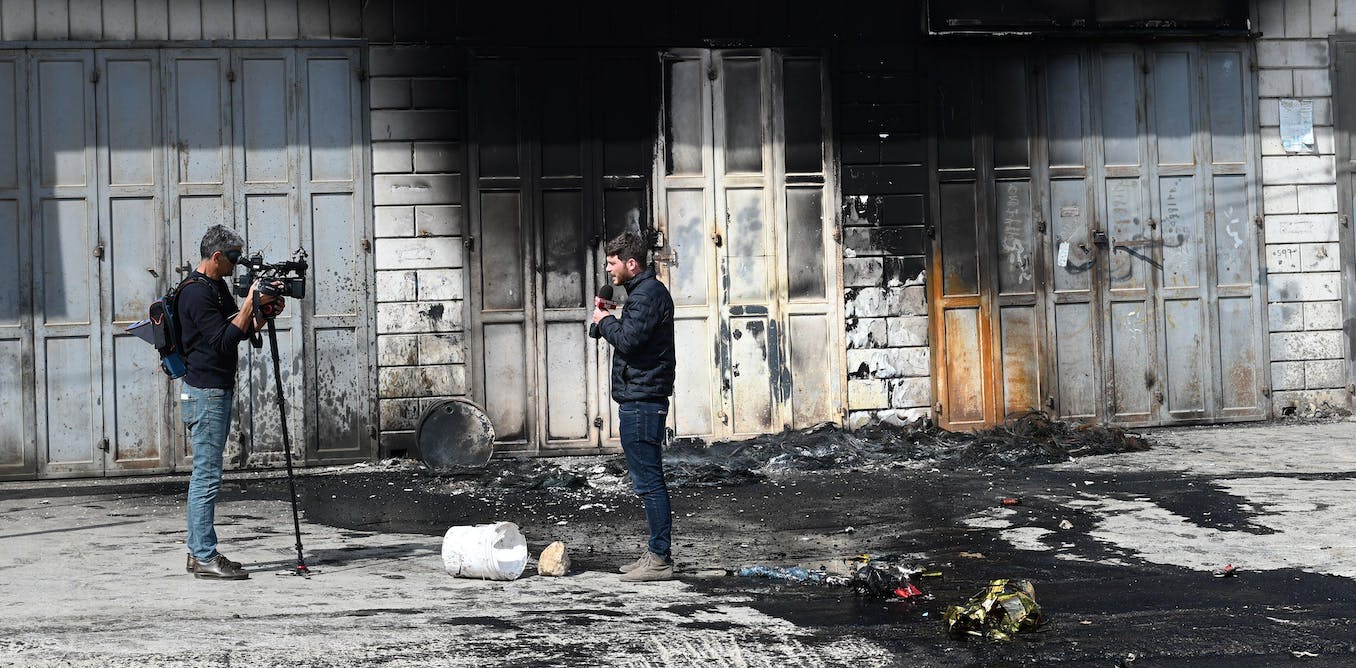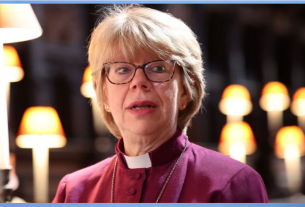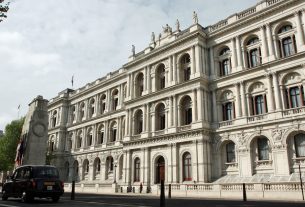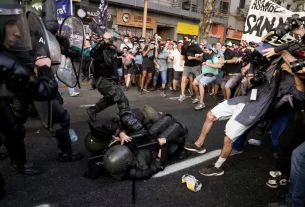Wael Dahdouh, one of the most well-known faces of Palestinian journalism in the Gaza conflict, has this week started medical treatment in Qatar. Dahdouh was wounded in December in an Israeli drone strike that killed his camera operator.
Al-Jazeera’s Gaza bureau chief has also lost his wife, two children and a grandchild in an Israeli raid that hit his home. This was followed by the loss of another son Hamza, also an Al-Jazeera journalist, when his car was hit by an Israeli missile while on a reporting trip.
In the current Gaza conflict, the number of journalists killed and injured continues to rise. One of the latest, as this article went to press, was Yazan al-Zuweidi, a Palestinian journalist and camera operator for the broadcaster Al-Ghad, who was killed on January 14 in an Israeli airstrike in northern Gaza.
Now many international bodies, politicians and non-governmental organisations are asking the inevitable question: “Are these killings targeted?” These organisations, including Reporters Without Borders (RSF) and the Committee to Project Journalists (CPJ), are calling for inquiries and investigations, but will these succeed in getting to the truth or securing prosecutions?
According to a CPJ report published on January 20, 83 journalists and media workers have been confirmed dead since October 2023, of which 76 were Palestinian, four were Israeli and three were Lebanese. The CPJ notes the data does not so far establish that “all of these journalists were covering the conflict at the time of their deaths”. However, it is including them all in its count as it “investigates the circumstances”.
RSF’s secretary-general, Christophe Deloire, said: “Journalists are paying a heavy price. We’ve noted that the number of journalists killed in connection with their work is very high: at least 13 in such a tiny territory. We have filed a complaint with the International Criminal Court (ICC) to establish the facts and to what point journalists were knowingly targeted.”
The first incident of journalists being targeted that came to international attention was on October 13, on Lebanon’s southern border with Israel. Reports of cross-border shelling had drawn a group of seven journalists to the area. According to Reuters, this group was hit by two shells fired in quick succession from Israel. Reuters video journalist Issam Abdallah was killed and AFP photographer Christina Assi was badly wounded and had to have her leg amputated.
At the time, RSF said: “The reporters were not collateral victims of the shooting. One of their vehicles marked ‘press’ was targeted, and it was also clear that the group stationed next to it was journalists.”
Following the incident, Reuters and AFP conducted investigations. Reuters spoke to “more than 30 government and security officials, military experts, forensic investigators, lawyers, medics and witnesses to piece together a detailed account of the incident”. Mobile phone footage from eight media outlets was examined and shrapnel was sent for analysis to the Netherlands Organisation for Applied Scientific Research.
Further investigations were carried out by Amnesty International and Human Rights Watch, which, along with RSF, proposed the attacks be investigated as possible war crimes. The Lebanese prime minister, Najib Mikati, said his government was pursuing a complaint filed with the UN security council.
AP/Alamy
Reuters’ evidence was presented to the Israel Defense Forces (IDF), whose international spokesperson Lieutenant Colonel Richard Hecht said: “We don’t target journalists.” Israel’s UN envoy, Gilad Erdan, reiterated this point later, saying: “Obviously, we would never want to hit or shoot any journalist that is doing their job. But you know, we’re in a state of war, things might happen.”
While it might be possible to prove this particular case, backed by the investigative resources of international news organisations, it is going to be a lot more difficult to provide the same level of detail from within the enclosed Gaza Strip, where it is increasingly difficult to gather evidence or even operate as a journalist.
When questioned about the high number of journalist deaths by UK radio station LBC’s Lewis Goodall, the former ambassador and Israeli spokesperson Mark Regev avoided answering by asserting instead that: “Israel is the only country in the region that protects and defends the freedom of the press.”
Prosecuting cases
So, what is the likelihood of these Gaza deaths ever being prosecuted? A previous case illustrates the difficulties.
A year before this latest Gaza conflict, in May 2022, Al-Jazeera’s reporter in Palestine Shireen Abu Akleh was killed. While covering an Israeli military operation in a refugee camp in the West Bank town of Jenin, Abu Akleh’s reporting team came under fire, despite the fact they were wearing clothing and helmets that clearly marked them out as journalists.
In the immediate aftermath of the killing, Israeli officials put out a story that it was likely the dual Palestinian-American citizen was shot by “indiscriminate Palestinian militant gunmen”.
This was later disproven following the examination of mobile phone footage and investigations by human rights groups, various media companies and the UN. Four months later, the IDF admitted there was a “high possibility” that Abu Akleh was shot “accidentally” by an Israeli soldier. Following this, the IDF’s military advocate general’s office said it would not be pursuing criminal charges against the soldiers involved.
As killings of journalists continue, local reporters are increasingly the only media left in Gaza. It is out of bounds for most international reporters, except under limited and controlled embedding operations with the IDF. The danger makes it more and more difficult to cover what is going on.
It’s a pattern also seen following the war in Iraq in 2003, and Syria from 2011, when reporting in these locations became too dangerous for international reporters, who relied on local journalists until eventually it became too difficult for them too. In these places, and increasingly in Gaza, news becomes impossible to get out, and potentially the space for disinformation grows.



